Fiber Optic Systems: Market, Connectors, and Installment
Published by Cablesys on Mar 14th 2018
Fiber optic connectors are designed for connecting and disconnecting optical fibers. They simplify the intricate process of installing fiber optic patch cables. Fiber connectors, known as the standard in the industry, are those that have been refined multiple times and over the course of many years. The essential connector types are ST, SC, LC, MPO, and MTP. These connectors come in various styles and have uses for multiple applications. This article will discuss the market for fiber optic connectivity, the foundation of fiber connector varieties, and the process of installing them.
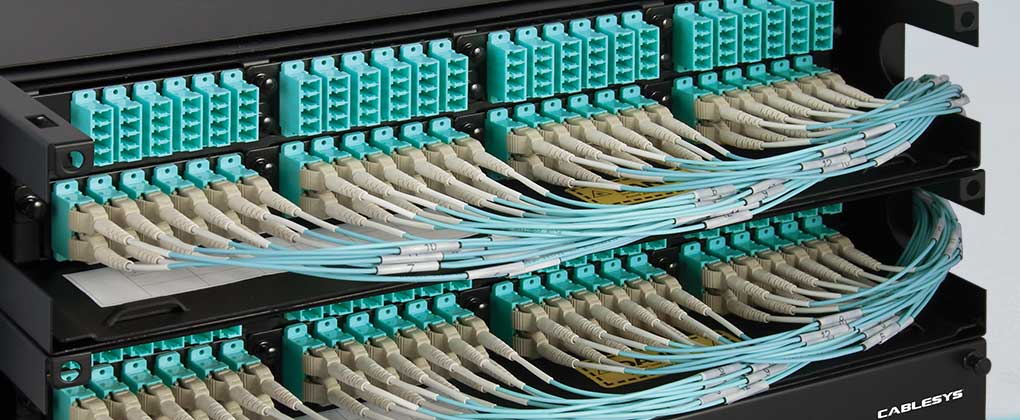
The Market Demand for Fiber Optic Connectors
The worldwide business of fiber optics has attained major affluence in the last few years. This market is projected to be worth 5.9 billion USD by 2025, based on an analysis done by Grand View Research, Inc. It is also anticipated that it will gain a higher profile over the time of the forecast period. The leading force behind the universal market is the developing acceptance of fiber optic technology. Fiber optic technology consists of various fiber connectors, like MTP connectors, ST connectors, LC connectors, and SC connectors, amongst others. In this market, fiber optic products are classified in different categories, such as military and aerospace, oil and gas, telecom, medical, BFSI, and railway, just to name a few.
Connector Varieties
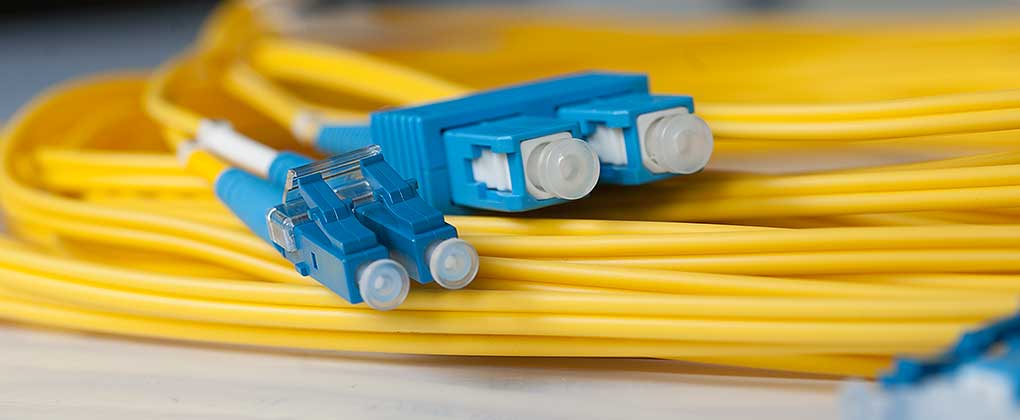
ST, SC, LC, MTP, and MPO are just a few of the most widely used connectors. All of the connector types have their own pros, cons, and unique abilities and uses. In general, every fiber connector contains four base parts. These include the ferrule, connector body, cable, and coupling device. All of these connectivity types have been used in various fiber optic applications. This article will address the four most common fiber connector types and their roles in the fiber optic system as a whole.
LC (Lucent) Connector
The Lucent fiber optic connector, created by Lucent Technologies, has become the universal fiber connector for telecom installations. Although it originated with Lucent Technologies, LC does not stand for ‘Lucent Connector’. It is actually used in partnership with small form pluggable, or SFP, optical transceivers. SFP devices are now popularly used in Pro AV applications for products like HDMI, DVI, audio, optical/electrical/optical (OEO) switches, and so many more. Some unique features of the LC connector are that it is smaller than other connectors and it is structured with a push-pull design.
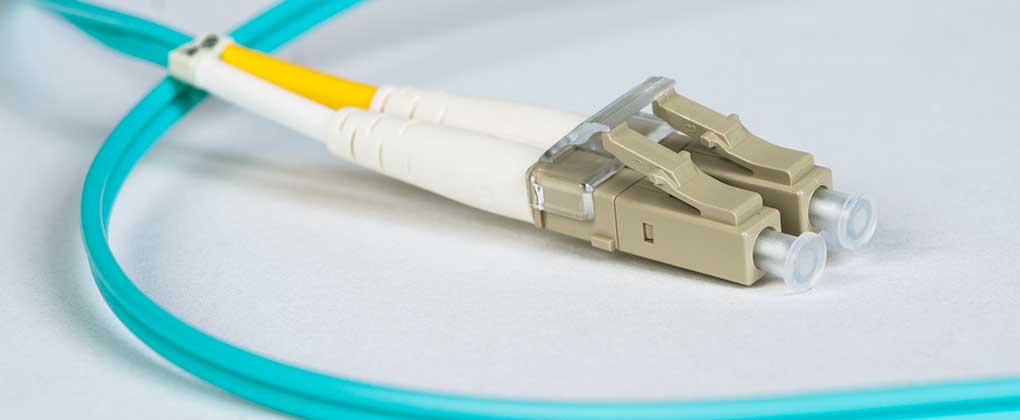
SC (Subscriber) Connector
SC fiber connectors are typically used in single-mode fiber optic telecommunications applications and analog CATV. Similar to the LC connector, this connector also has the push-pull design and is widely utilized in patch panels that are a junction between the main cable and smaller patch cords connected to the fiber transmission equipment. Some fiber AV equipment manufacturers also use SC connectors with their optical emitter and detector devices.

ST (Straight Tip) Connector
The ST connector is easily one of the most frequently used connector types. This connector type is made of simplex fiber and was perfected multiple times before being debuted by AT&T in the mid-late 1980s. ST has become the norm in the security market and is usually used in the AV market on products like HDSDI, RGB/DVI, etc. It comes in both single-mode and multimode applications. ST connector insertion loss is less than 0.5 dB, with values of 0.3 dB achieved often. It is fairly easy to terminate in the fields. It also has exceptional strain relief, and average attenuation characteristics.
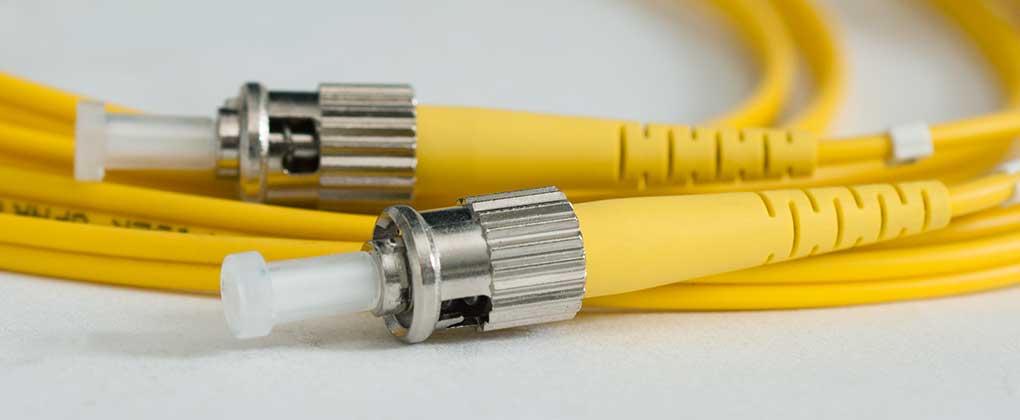
MPO/MTP (Multi-fiber Push On) Fiber Connector
The MPO/MTP fiber connector conjoins between 12 and 24 fibers together into a single rectangular ferrule. Usually, it is used in 40G and 100G optical parallel connections. MPO/MTP are much more intricate and complex connectors than the standard, non-fiber options. This is due to the many variations of this connector (e.g. key-up, key-down, male, and female).
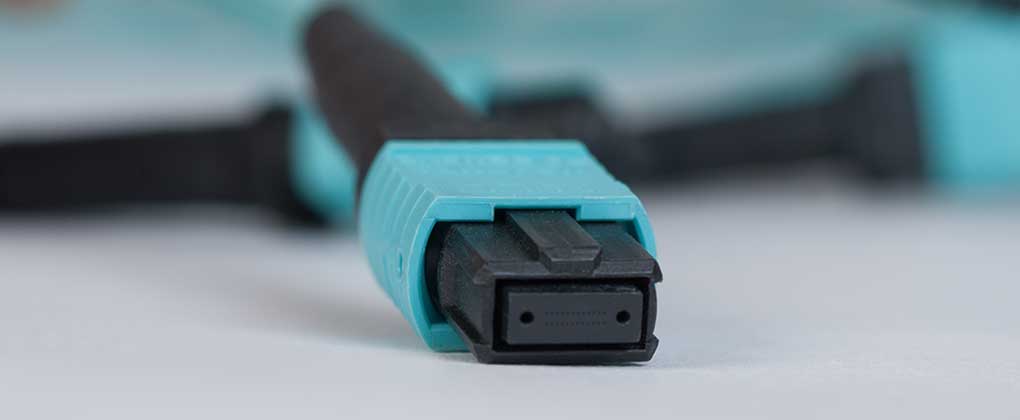
How to Install Fiber Optic Connectors
Fiber optic connectors are rather simple to install and can be finished in as little as 30 minutes. The procedure will walk you through the process step by step.
- At the end of the fiber cable, remove the plastic jacket. (The fiber optic cables have these jackets to prevent any potential damage to fiber during the process of shipping from the manufacturer). With a fiber optic stripping tool, which is specifically tailored to the size of a fiber optic jacket, clasp the jacket. Grip the handles of the tool together like pliers to detach the jacket from the fiber.
- Turn the cap of the epoxy glue gun counterclockwise to open the back chamber. Place the tube of epoxy glue into the chamber and squeeze gently. For this task, a few ounces of glue will be sufficient. Next, replace the cap back to the chamber.
- Administer the glue into the fiber optic connector socket. Every fiber connector contains two sockets on each end of it to create the connection. Place the glue gun inside the socket. To release the glue into the socket, pull and hold the trigger. The glue dispensed should not exceed the size of a hole in the wall from a thumbtack.
- Join one of the fiber cable ends to the connector sockets. Hold the cable and socket fixture together for 10 seconds to ensure complete bonding. Release your grip on the two parts and inspect it to confirm that the cable is stationary and secure.
- This last step involves putting the new connection into an epoxy curing oven. Turn on the oven and set the timer for six minutes. Place the newly connected fiber and socket into a slot in the curing oven. Push start. After six minutes, remove the connector from the oven and twist the connector back and forth to test the connection’s stability. If it is not stable, place it back in the oven for a few more minutes, until it is solid. Complete steps 3-5 to secure both ends of the fiber connector.
The above installation procedure may be intricate and tedious for some new installers. In view of this situation, Cablesys can build custom fiber optic cable assemblies to your spec. You can specify the configuration, length, color, cable rating, bandwidth and more. Click here to read more about Cablesys’ OEM custom fiber cable assembly solutions.
Summary
Because there are many options in fiber connectivity, there is sure to be some type of connectivity suited for each different company. In addition, companies will find it easier to switch to fiber because of the product diversity. Switching to fiber will improve the speed and efficiency of their workplace. Cablesys offers an extensive selection of fiber optic products that are certain create a complete fiber optic system to fit your needs.
